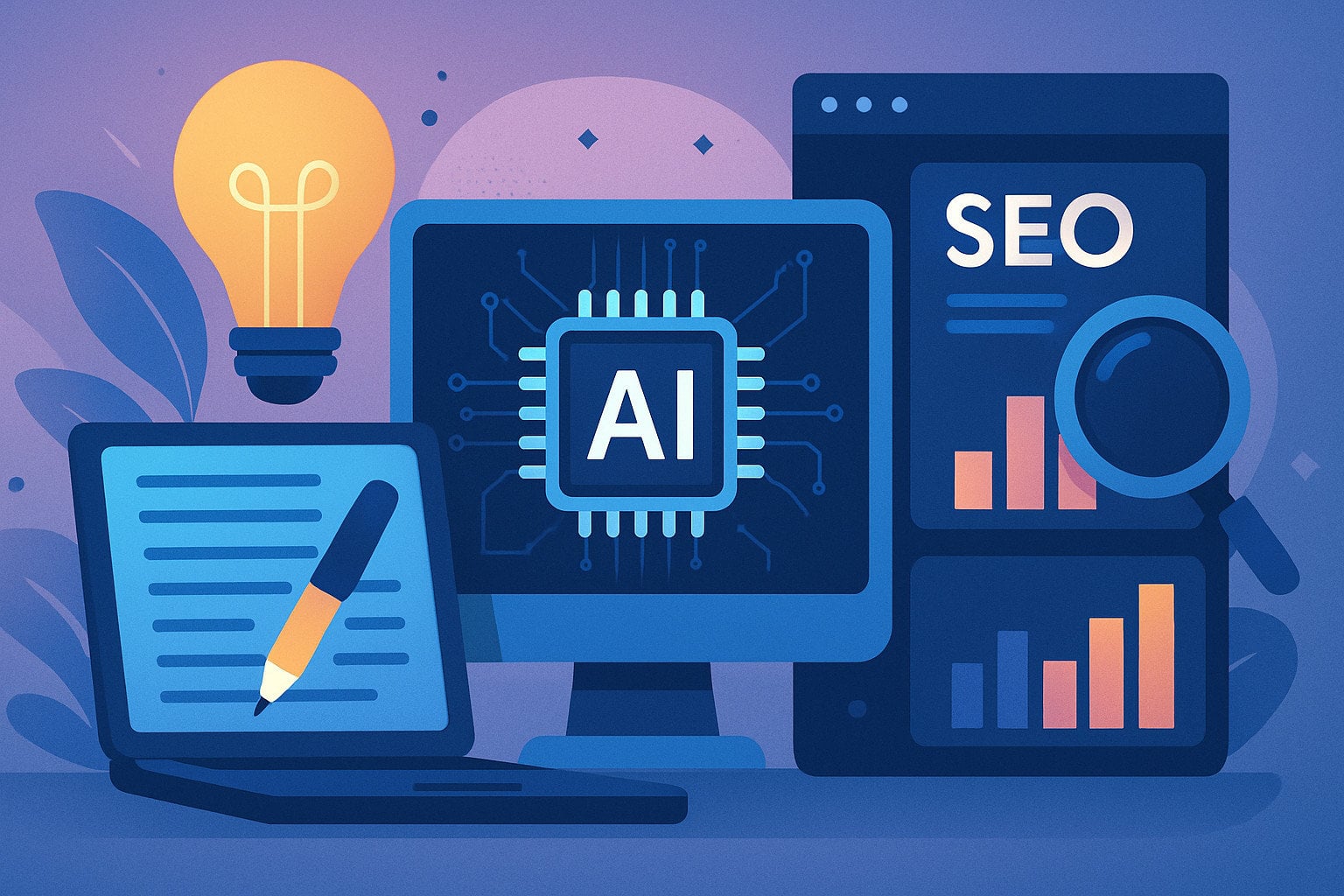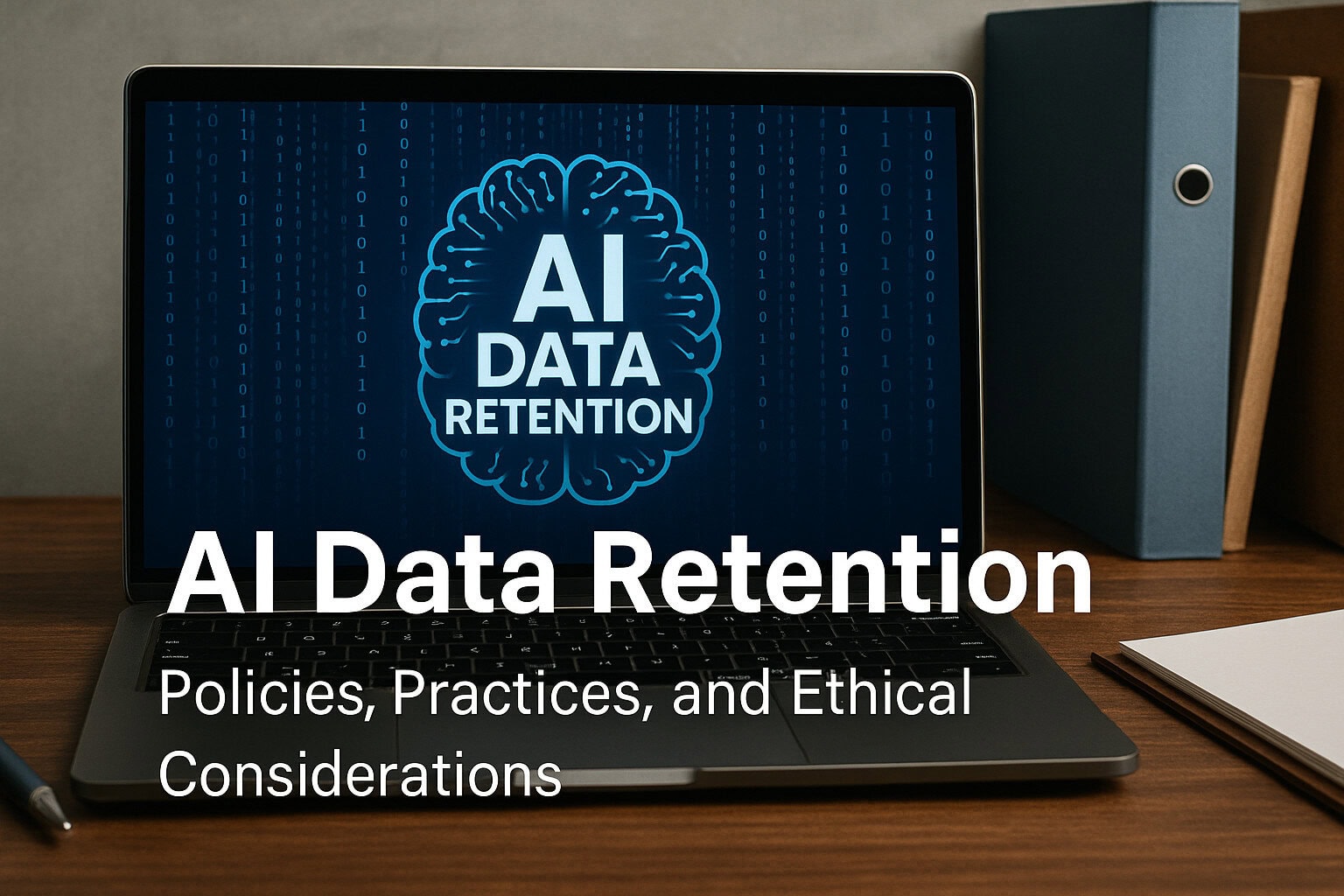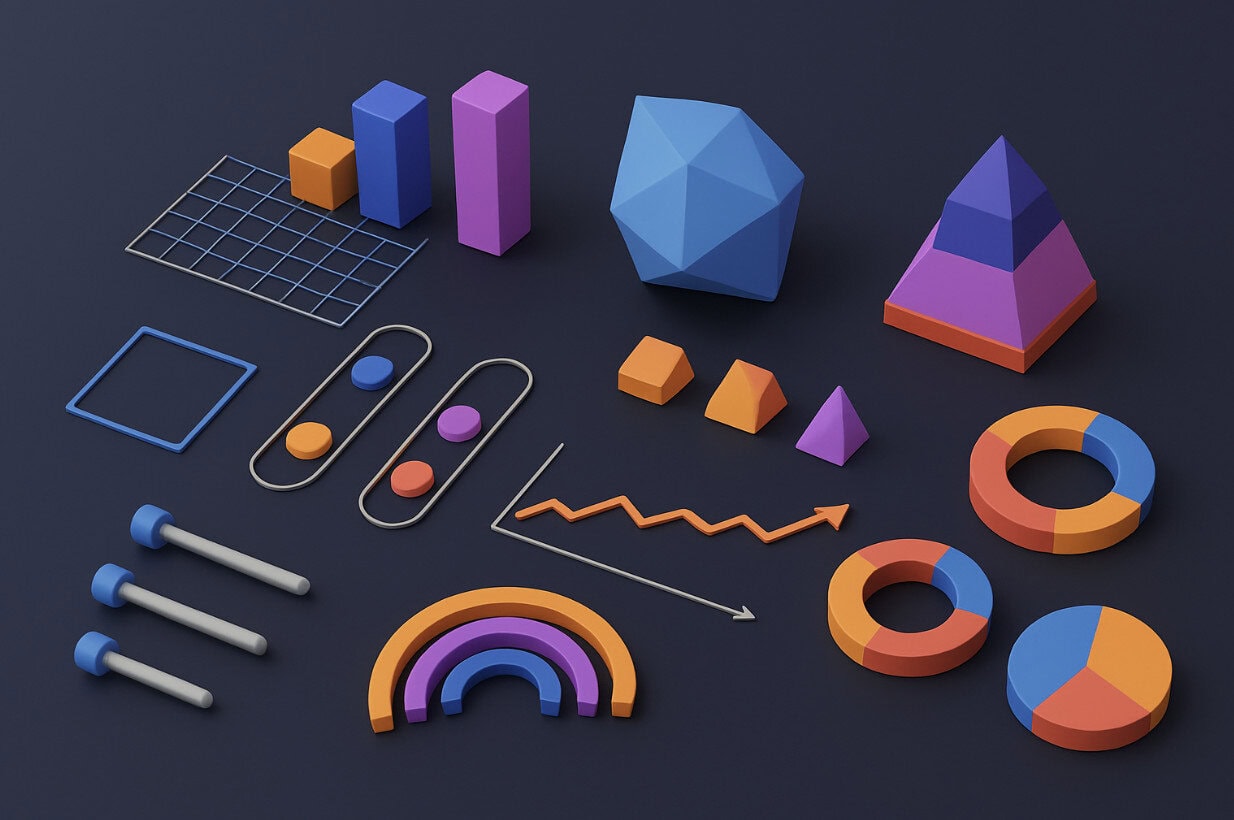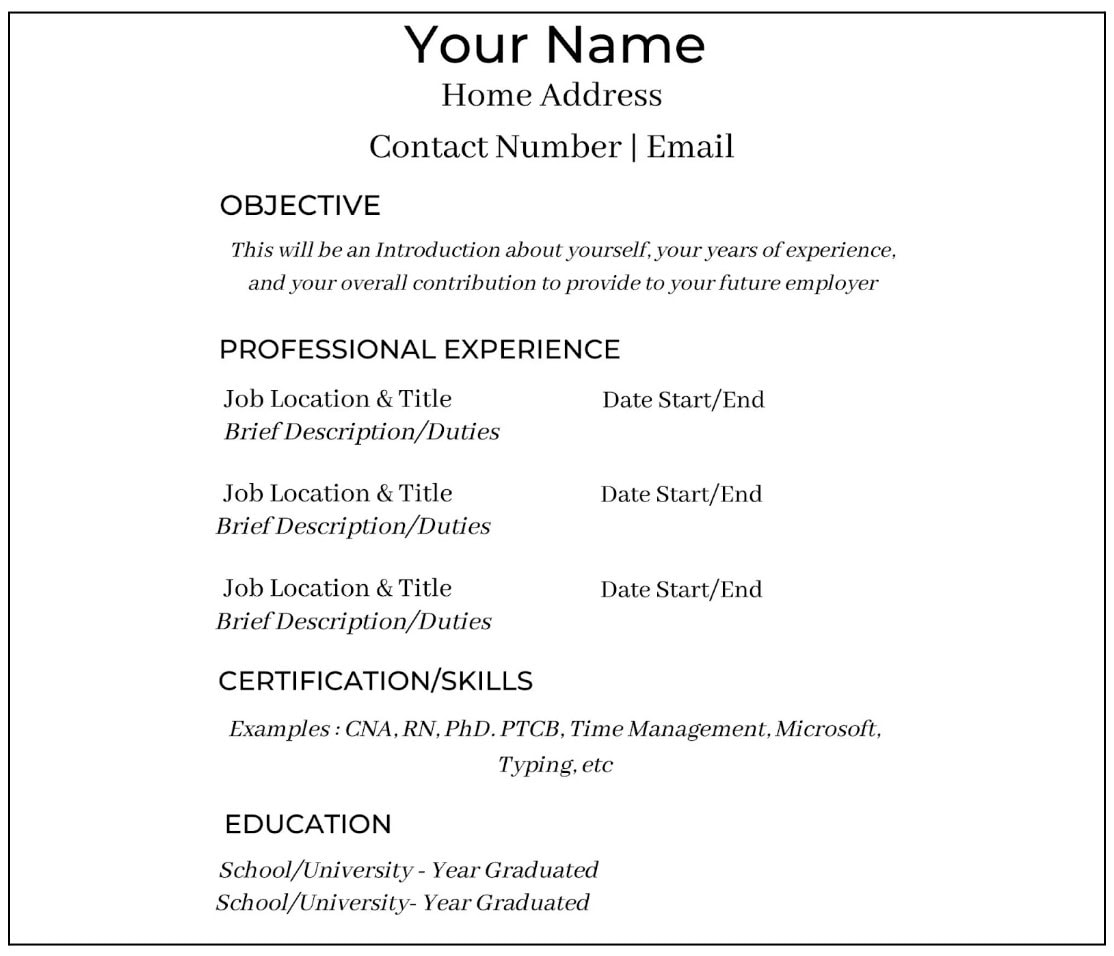Are you making the most of AI in your daily workflow, or are powerful tools passing you by?
AI isn’t just a trend, it’s a transformative force reshaping how businesses operate, create, and compete. From automating routine tasks to streamlining complex decision-making, the right AI tools can unlock significant productivity and growth.
In this guide, I’ll walk you through twelve of the most effective AI tools available today, grouped by their core use cases. You’ll discover key features, pros and cons, and my personal take on where each tool shines. I’ve also included direct links so you can explore them further. Whether you’re focused on marketing, content creation, SEO, or overall business efficiency, this curated list will help you find the tools that best match your needs.
AI Writers: Enhancing Content Creation
1. OpenAI’s GPT-4
GPT-4 by OpenAI is a powerful language model capable of generating human-like text. It’s widely used for content creation, customer support, and automating responses.
Advantages:
- Exceptional language understanding and generation.
- Versatile applications in various industries.
- Continuously learning and improving.
Disadvantages:
- Requires significant computational resources.
- Potential ethical concerns with misuse.
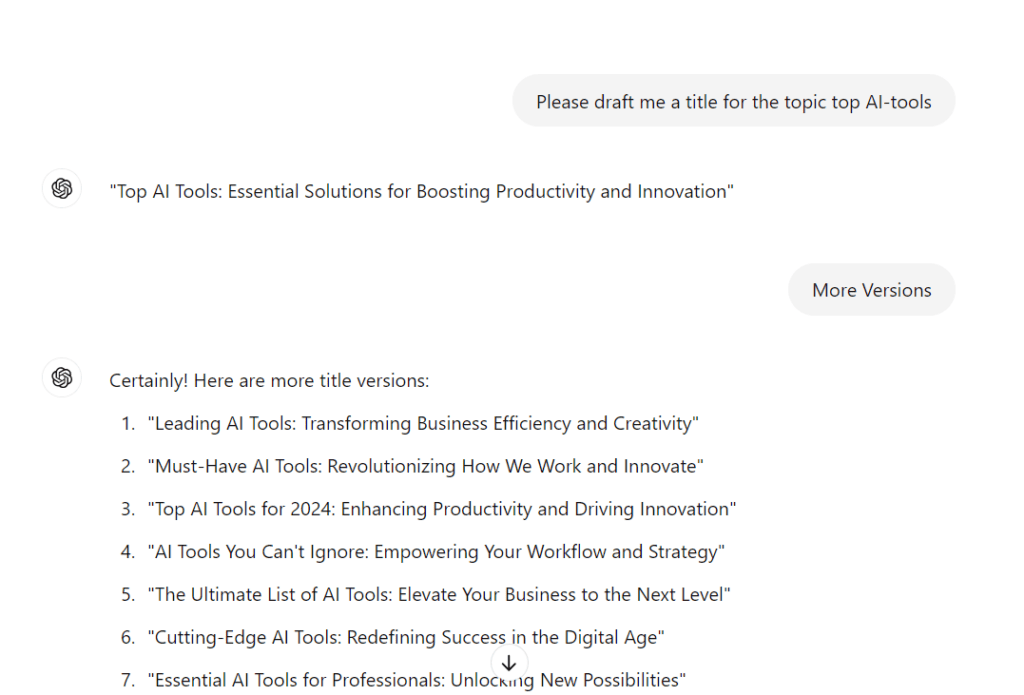
2. Jasper AI
Jasper AI (formerly Jarvis) is a content creation tool that leverages AI to generate blog posts, marketing copy, and social media content.
Advantages:
- Fast content generation tailored to specific needs.
- Easy-to-use templates for various content types.
- Constantly updated with new features.
Disadvantages:
- Requires guidance to avoid generic output.
- Subscription can be expensive for small businesses.
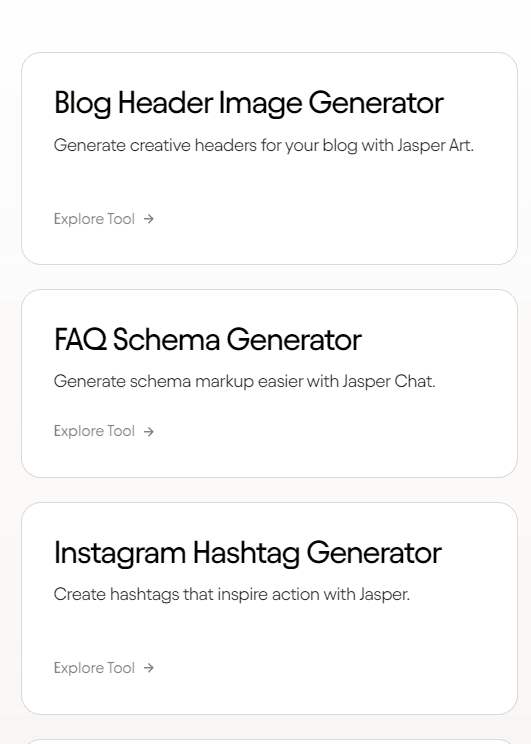
3. Copy.ai
Copy.ai is an AI-powered content generator that creates marketing copy, product descriptions, and more, aimed at enhancing brand messaging.
Advantages:
- Fast generation of high-quality marketing content.
- Easy-to-use with a variety of templates.
- Regular updates with new features.
Disadvantages:
- Output may require tweaking for uniqueness.
- Subscription model might be pricey for some users.
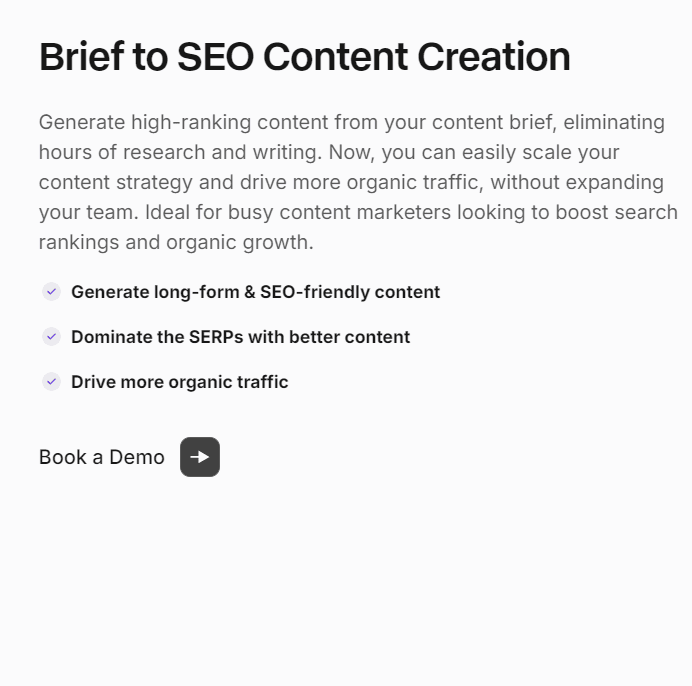
3. Knolli
Knolli AI is an AI-powered platform designed for creators to transform their knowledge, videos, and content into interactive AI copilots that engage, educate, and even monetize their audience.
Advantages:
- Enables creators to build personalized AI assistants from their own content.
- Offers branding, tone customization, and monetization options.
- Supports multiple content types — videos, blogs, FAQs, PDFs, and more.
Disadvantages:
- Requires initial setup and content uploads for best results.
- Advanced customization options may take time to explore fully.
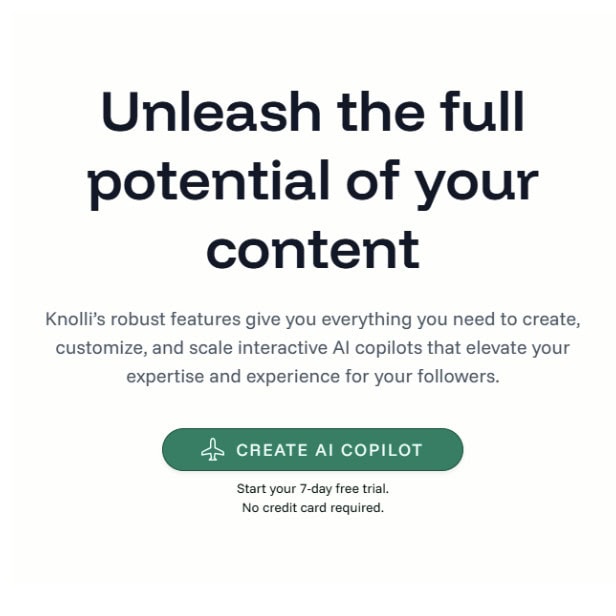
AI Tools for SEO: Optimizing Search Engine Visibility
AI tools for SEO help analyze keywords, optimize content, and track search rankings—enabling smarter, data-driven decisions to boost your website’s visibility on search engines.
4. Surfer SEO
Surfer SEO is an AI tool that optimizes content to improve search engine rankings, analyzing over 500 factors to provide actionable insights.
Advantages:
- Detailed SEO analysis and recommendations.
- Integration with content editors for real-time optimization.
- Supports keyword research and content planning.
Disadvantages:
- Steep learning curve for beginners.
- Can be expensive for small websites.
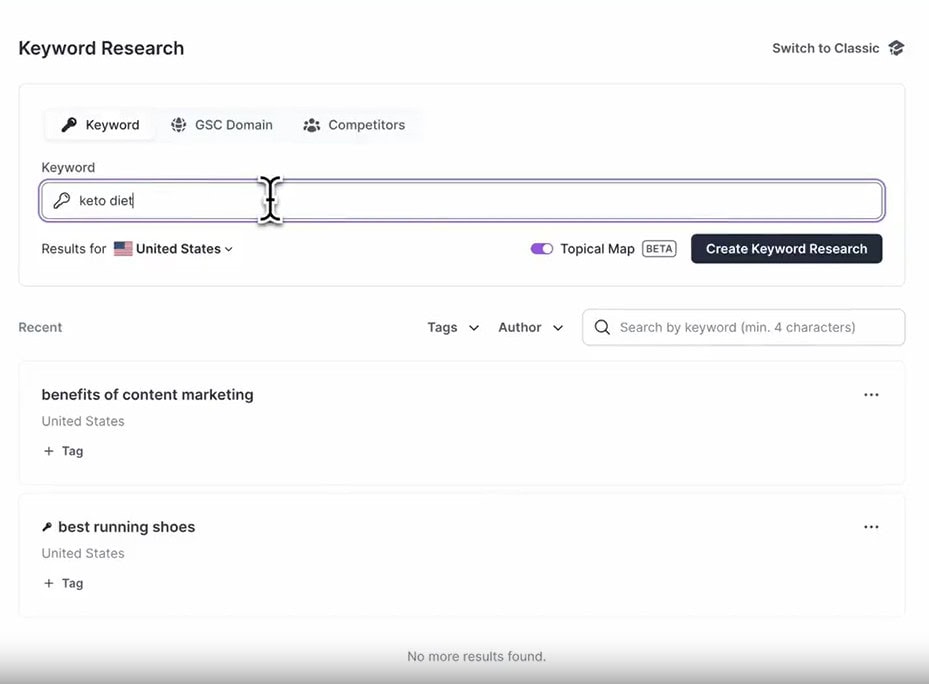
5. Grammarly
Grammarly is an AI-powered writing assistant that helps users with grammar, punctuation, style, and tone.
Advantages:
- Real-time grammar and spelling checks.
- Contextual suggestions to improve writing.
- User-friendly interface.
Disadvantages:
- Limited functionality in the free version.
- Over-reliance can hamper learning for new writers.
Personal Insight: Grammarly is indispensable for ensuring that my content is polished and professional. It’s like having a dedicated editor on hand at all times.
AI Tools for Marketing: Enhancing Engagement and Conversion
AI tools for marketing personalize customer interactions, automate campaigns, and analyze performance metrics—driving higher engagement and improved conversion rates.
6. HubSpot’s AI Tools
HubSpot offers a suite of AI-powered tools for marketing, sales, and customer service, enhancing user engagement and conversion rates.
Advantages:
- Comprehensive integration with HubSpot’s CRM.
- Predictive lead scoring and customer insights.
- Automation of repetitive tasks.
Disadvantages:
- Can be overwhelming for new users.
- Higher cost compared to standalone AI tools.
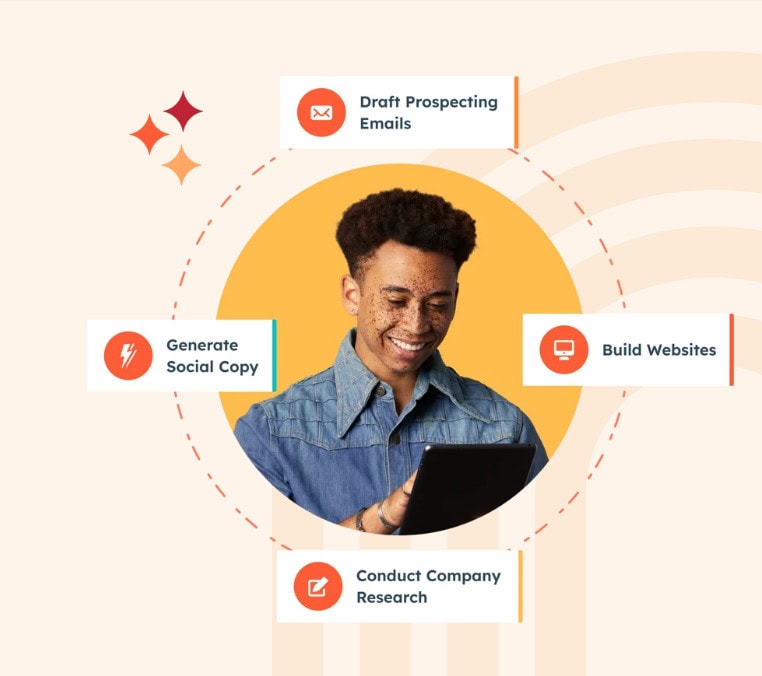
7. Hootsuite’s OwlyWriter AI
OwlyWriter AI by Hootsuite is designed for social media content creation, helping users craft engaging posts with minimal effort.
Advantages:
- Tailored social media content suggestions.
- Integration with Hootsuite’s scheduling tools.
- Supports multiple platforms.
Disadvantages:
- Limited creativity compared to human writers.
- Subscription cost may be high for solo entrepreneurs.
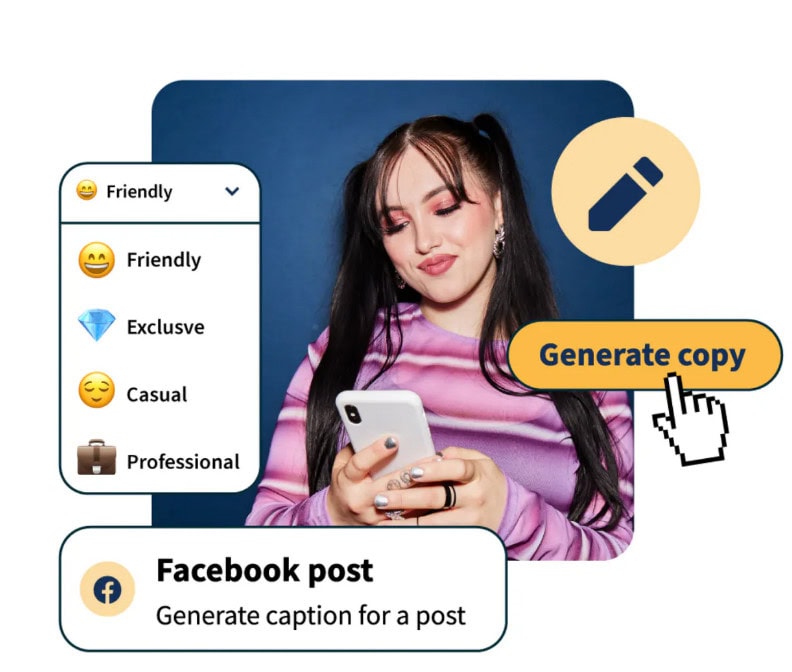
AI Tools for Reporting: Streamlining Analysis and Decision Making
AI reporting tools automate data collection, visualize key AI insights, and deliver real-time analytics—making it easier to track performance and make informed decisions faster.
8. Coupler.io’s AI Insights
AI Insights by Coupler.io transforms marketing dashboards into clear summaries and action plans, helping users make smarter, faster reporting decisions.
Advantages:
- Instantly highlights top and underperforming channels or campaigns.
- Provides trend analysis, key findings, and tailored recommendations.
- Benchmark your performance against industry averages.
Disadvantages:
- Basic training resources for progressive users.
- Limited advanced customization for AI-generated insights.
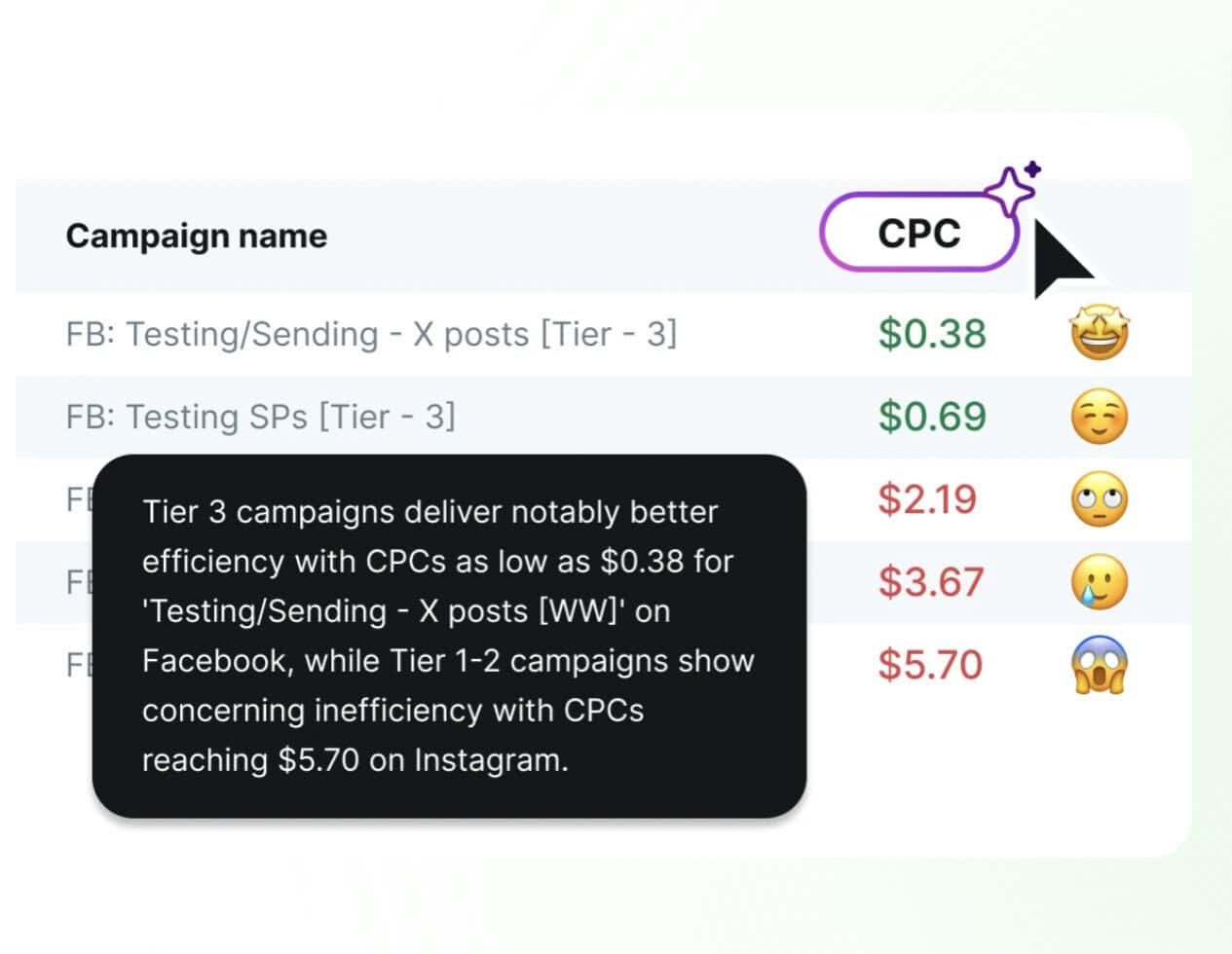
9. Polymer Search AI
Polymer Search is an AI-powered tool that transforms your spreadsheet or CSV data into interactive dashboards and smart insights, no coding or technical setup required.
Advantages:
- Instant dashboard creation from raw data
- AI-generated insights to spot trends and patterns
- User-friendly drag-and-drop interface
Disadvantages:
- Limited advanced customization options
- Fewer data source integrations compared to BI platforms
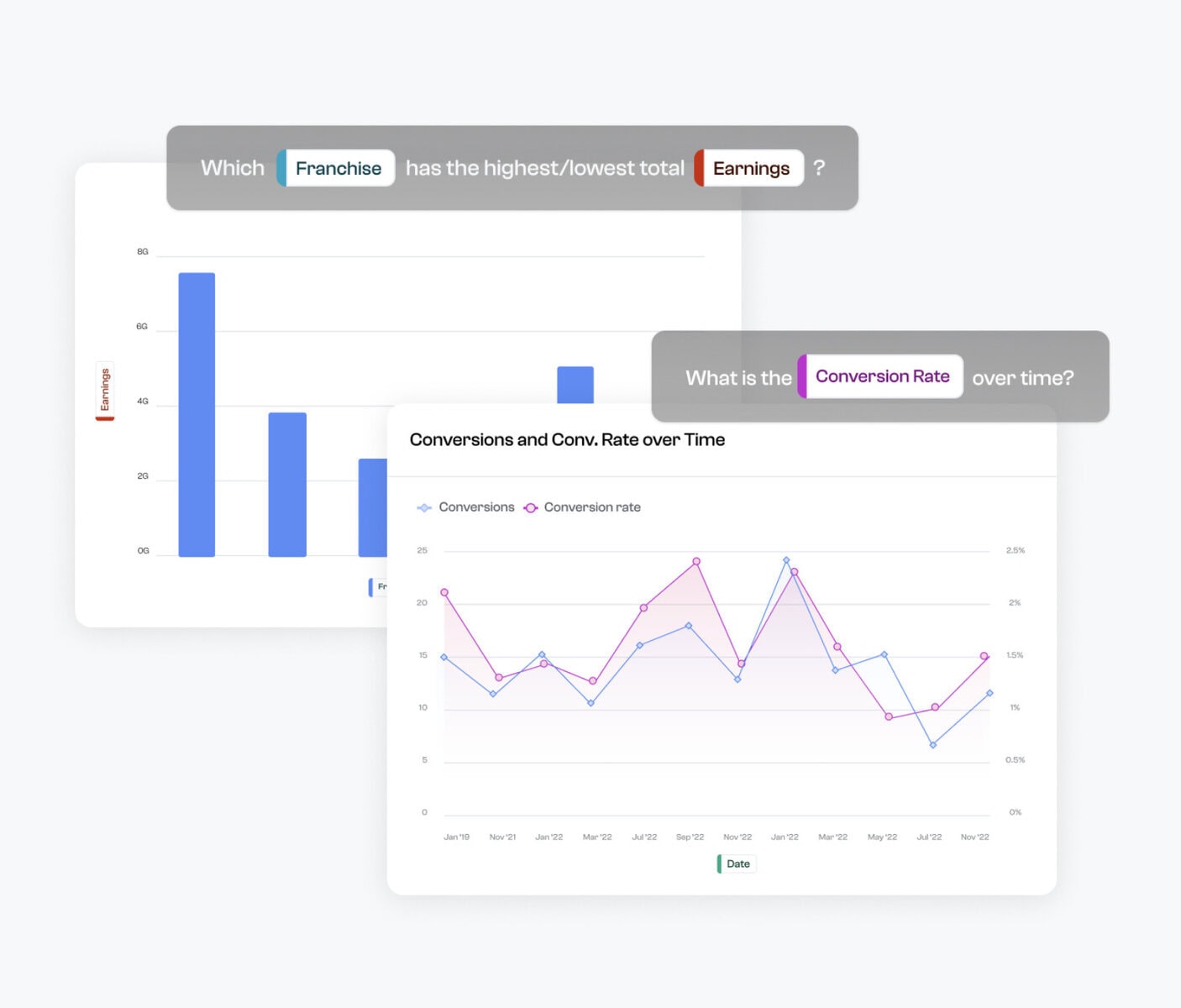
AI Productivity Tools: Streamlining Workflows
Streamlining workflows is a must these days, but that’s not all. Businesses are using ERP (Enterprise Resource Planning) system more each day. Every ERP systems company can benefit from using it due to its integration capabilities, for example with a time-tracking software. It allows autiomation and centralization of data processes, making daily tasks much easier and centralized in a single platform.
10. Zapier
Zapier automates workflows by connecting different apps, making it easier to manage tasks across various platforms without manual input.
Advantages:
- Automates repetitive tasks.
- Supports integration with thousands of apps.
- Easy to set up with no coding required.
Disadvantages:
- Some advanced features require a paid plan.
- Occasional issues with complex workflows.
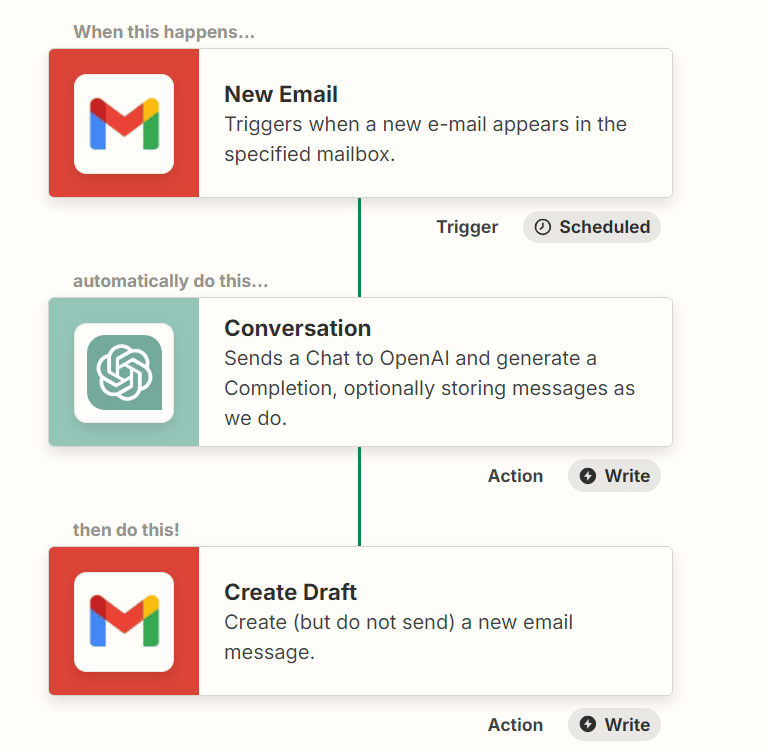
11. Canva’s Magic Resize
Canva’s Magic Resize is an AI-driven tool that automatically resizes designs to fit different social media management software, saving time and ensuring consistency.
Advantages:
- Instant resizing for multiple formats.
- Maintains design integrity across platforms.
- User-friendly interface.
Disadvantages:
- Limited to Canva’s ecosystem.
- Some advanced features require a paid subscription.
Personal Insight: Canva’s Magic Resize has been a game-changer for my social media campaigns, allowing me to repurpose designs quickly and effectively.
AI Tools for Content Creation: Bringing Ideas to Life
AI tools for content creation assist in generating high-quality text, images, and videos—helping creators brainstorm, draft, and publish content faster and more efficiently.
12. Design.com AI Tools
Design.com AI Studio is an all-in-one creative suite that uses AI to help generate visual assets, write content, and design layouts — perfect for creators looking to streamline their content workflow.
Advantages:
- Generates text, graphics, and layouts in seconds.
- Easy-to-use interface with drag-and-drop functionality.
- Smart branding tools that auto-match fonts, colors, and tone.
Disadvantages:
- Limited offline functionality.
- Some advanced design tweaks require manual editing.
My Opinion:
13. Lumen5
Lumen5 is an AI-powered video creation platform that transforms blog posts, articles, or scripts into engaging videos within minutes. It’s widely used by marketers, educators, and businesses to repurpose written content into dynamic video formats for social media and websites.
Advantages:
-
Converts text into video quickly and easily.
-
Large library of stock footage, music, and templates.
-
No advanced video editing skills required.
Disadvantages:
-
Customization is limited compared to professional video editors.
-
Premium features require a higher subscription tier.
My Opinion:
Lumen5 is perfect for creating quick, shareable videos, though I sometimes find its templates a bit restrictive for more complex projects. However, pairing Lumen5 with authentic footage from UGC creators people sharing real-life product use can inject genuine appeal into templated content.
14. BrandCrowd
BrandCrowd is a design platform that offers AI-assisted tools like AI logo generator, AI website builder, AI poster maker, and one-click AI background remover. It’s beginner-friendly, no code editor makes it a great option for entrepreneurs who have no design experience.
Advantages:
-
Quick and easy graphic generator.
-
Unlimited customization.
-
Library of unique fonts, images, shapes, and other visual elements.
Disadvantages:
-
Less advanced or technical customization compared to other softwares.
-
Some designs require paid subscription.
My Opinion:
BrandCrowd is great if you are looking for a nice and simple design, fast. But if you are looking for a more extensive editing or more intricate designs, then more advanced software is still better.
AI Tools for Data Archiving & Compliance
15. Jatheon
Jatheon is an AI-powered data archiving and eDiscovery solution designed to help businesses manage and secure digital communications across email, chat, mobile, and social platforms. Its AI assistant makes it easier to summarize files, detect risks, tag sensitive data, and even transcribe audio or video content for fast, accurate search.
Advantages:
-
Flexible deployment options: AWS cloud, on-premises, or virtual setups.
-
AI features like automated tagging, transcription, and smart risk detection.
-
Supports 25+ communication channels with easy data migration from 30+ systems.
Disadvantages:
-
Advanced AI bundles may require custom pricing.
-
Add-ons for channels like WhatsApp or Google Chat increase monthly costs.
My Opinion:
Jatheon is a strong choice for small teams and growing startups that need compliance without complexity. I like how its AI reduces review time and makes discovery painless. While the add-on pricing for extra platforms can add up, its flexibility and security make it a reliable long-term solution.
AI Tools for Referral Programs
16. ReferralCandy
ReferralCandy offers a smart AI-powered tool within Shopify that helps merchants automatically generate referral programs based on a simple prompt. Instead of manually configuring rewards, rules, and emails, users can describe their goals and let ReferralCandy’s AI do the heavy lifting.
Advantages:
- Automatically generates complete referral program structures.
- Saves time with AI-powered copy for emails and referral pages.
- Seamless integration with Shopify.
Disadvantages:
- AI suggestions may require tweaking for niche markets.
My Opinion:
ReferralCandy is useful AI-powered tool that helps with referral programs automation.
Frequently Asked Questions
Final thoughts
Are you ready to turn AI from a buzzword into a real advantage for your business? In the rapidly evolving world of AI, choosing the right tools can make a significant difference in your business’s success. Whether you’re focused on content creation, marketing, or SEO, the tools mentioned in this article offer powerful solutions to enhance your productivity and achieve your goals. My personal favorites, like GPT-4 and Jasper AI, have proven invaluable in my work, and I believe they can do the same for you. Don’t forget to explore the links provided to dive deeper into each tool and see which ones align best with your needs. Your next breakthrough might just be one AI tool away.


